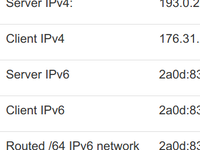Just a few days ago, HE.NET Tunnelbroker's French server experienced an outage. When I configured my Kimsufi server, I assigned the native IPv6 addresses to ESXi for exclusive use (as described in this article ), leaving pfSense with only native IPv4 and obtaining IPv6 addresses through Tunnelbroker. Consequently, all virtual machines on the server lost IPv6 connectivity. More critically, since I had set up a NAT64 service on the server following this article , and configured pfSense's DNS resolution to prioritize Google DNS's NAT64 servers (2001:4860:4860::64 and 2001:4860:4860::6464) with IPv4 as fallback, DNS resolution almost completely failed due to the IPv6 outage combined with pfSense's long DNS timeout settings. To prevent such cascading failures from recurring,...
Building Your Own IPv6 Tunnel with ZeroTier One
Preface Most ISPs in China do not provide IPv6 addresses to users, except for the Education Network. However, the IPv6 service on the Education Network is highly unstable (possibly specific to my institution), and once you leave campus, IPv6 becomes unavailable, which is quite frustrating. One alternative is using HE.NET's tunnel service . After SixXS shut down, they are currently the largest remaining IPv6 tunnel provider, and their service is completely free. However, their service isn't suitable for home network environments in China, as home networks typically have dynamic IPs, and some ISPs have started using large-scale NAT to save costs, preventing users from obtaining independent IPs and causing conflicts within the same internal network....
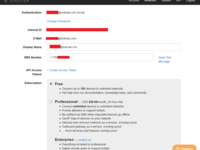
Establishing Dual-Stack Intercommunication Network Between Multiple Docker Servers Using ZeroTier One
Preface Achieving intercommunication between containers on multiple Docker servers is a challenging problem. If you build your own overlay network, you need to set up services like etcd on one server. But if the server hosting etcd crashes, the entire network goes down. The cheap VPS I use occasionally experiences network interruptions, and I often accidentally crash servers myself, so this approach isn't feasible for me. Docker also has other commercial overlay networking solutions like Weave, but for individual users, these solutions are too expensive (I'm just experimenting for fun), so they're not considered either. In these network architectures, central servers like etcd or Weave record which server each container is on and its internal IP, allowing DNS resolution to any container....
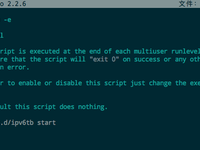
Configuring Hurricane Electric IPv6 Tunnel on OpenVZ, Enabling the Entire Address Pool and Using it Alongside Native IPv6
AlphaRacks is a cost-effective hosting provider, offering VPS with 1 CPU, 512MB RAM, and 10GB storage for just $9.9/year. However, this provider is quite stingy with IPv6 addresses, requiring users to justify their need for IPv6. It's said they provide up to 20 addresses? But they may not allocate the full amount. For example, when I explained I needed IPv6 to serve IPv6-only users, the provider replied: We've added 1 IPv6 address to your VPS. A single IPv6 address is insufficient for my needs. Fortunately, Hurricane Electric in the US offers IPv6 tunneling services , providing each user with 5 tunnels. Each tunnel includes a /64 address pool, and users can instantly activate a /48 address pool with one click. Despite this generous service, using it on OpenVZ VPS requires extra effort....
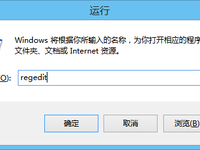
Resolving gogoCLIENT DNS Issues
Google services have been unstable recently, so I decided to use an IPv6 tunnel to connect to Google for better access speeds. Following the article I wrote last October, " Installation, Usage, and Bug Fixes for gogoCLIENT on Windows 8.1 ", I set up the tunnel on my computer. But when I opened the command prompt and tried to ping ipv6.google.com, the system unexpectedly reported "Ping request could not find host ipv6.google.com". This meant I was still connecting to Google services via IPv4, which didn't achieve the desired effect. Normally, I would search on Google for a solution, but the problem was that the connection to Google was intermittent... After a long time, I finally found a solution. The reason is that Microsoft, in designing the operating system,...
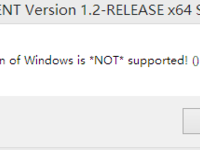
Installation, Usage, and Bug Fixes for gogoCLIENT on Windows 8.1
Half a year ago, when I was still using Ubuntu, I achieved interoperability between IPv4 and IPv6 using an XP virtual machine + gogoCLIENT . Today, when I tried to install gogoCLIENT (hereinafter referred to as GC) on Windows 8.1, I encountered a bizarre bug. Download link: http://www.gogo6.com/profile/gogoCLIENT (account registration required). When I launched the installer, GC immediately gave me a harsh welcome: The solution was straightforward: Right-click the installer, change the compatibility mode to Vista, and the main program will run without issues. After installation, I launched the main program, entered the previously used hg.tfn.net.tw , and connected. After 10 seconds, a notification popped up indicating a successful connection. But when I checked the network connections,...
Interoperability between IPv4 and IPv6
IPv4 is currently the most widely supported network protocol, where computers are identified by IP addresses. Theoretically, it can accommodate up to 2 32 2^{32} 2 32 network devices (IPv4: 8 hexadecimal digits). Unfortunately, these addresses have been exhausted, and it's truly a mystery how major ISPs allocate limited IP addresses to an infinite number of computers. IPv6 is far more impressive, with each address containing 32 hexadecimal digits, allowing for 2 128 2^{128} 2 128 network devices. These IP addresses will be more than sufficient before humanity perishes due to Earth's inability to sustain us. This protocol is championed by major internet companies including Google, DNSPod, and others. However, currently in China, IPv6 seems to be used only in universities,...
